- Service Table for Troubleshooting a Massey Ferguson Tractor Won’t Start
- Check the Battery if Your Tractor Won’t Start
- How to Examine the Fuel Filter if Your Tractor Won’t Start
- Ignition System Test Guide for Massey Ferguson Tractor
- How to Inspect the Coolant Levels and Cooling System
- How to Test the Starter Motor and Solenoid
- Test the Safety Switches
- How to Check the Engine Oil Level
- FAQ – Massey Ferguson Tractor Won’t Start
Is your Massey Ferguson tractor refusing to start? Are you in need of troubleshooting solutions to diagnose the problems and identify the underlying causes? Look no further! In this comprehensive guide, we’ll provide you with expert advice and step-by-step instructions to help you get your Massey Ferguson tractor up and running again. Whether it’s lack of power, issues with the fuel system, or other mechanical errors, we’ll help you navigate through the troubleshooting process, suggest necessary replacements, and provide useful tips along the way. Don’t let a non-starting Massey Ferguson tractor hold you back from your work. Let’s dive into the troubleshooting process and get your tractor back in action!
We’ll guide you through the process of visually inspecting your Massey Ferguson tractor and examining the engine components to identify the root cause of the starting issue. Whether it’s related to insufficient oil levels, power-related issues, fuel system problems, or any other potential factors, we’ll help you pinpoint the problem.
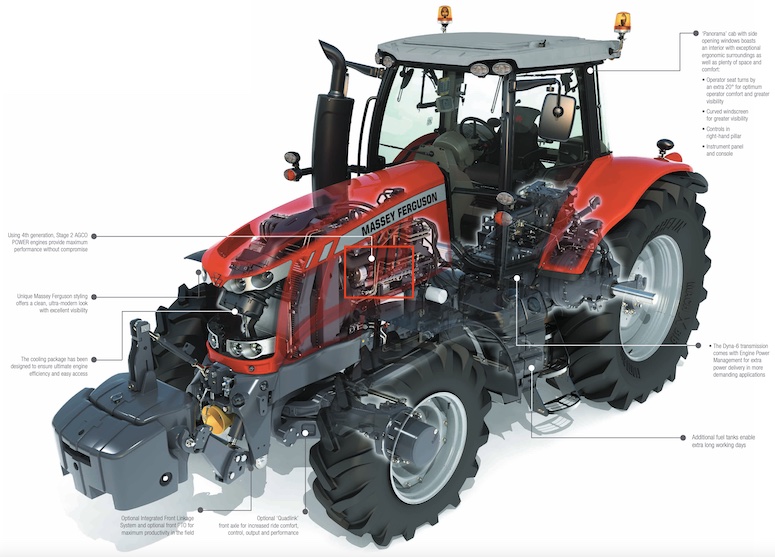
With our troubleshooting solutions and expertise, we aim to assist you in resolving the starting problem with your Massey Ferguson tractor. Let’s dive into the diagnostic process and get your tractor back in operation.
Here’s an elaboration on common causes and solutions for a Massey Ferguson tractor that won’t start, along with a corresponding table:
| Cause | Solution |
|---|---|
| Low Battery | 1. Check battery terminals for corrosion or loose connections. |
| 2. Charge the battery using an appropriate charger. | |
| 3. If the battery is old or damaged, replace it with a new one. | |
| Fuel Supply Issues | 1. Ensure there is enough fuel in the tank. |
| 2. Check the fuel filter for clogs or debris; clean or replace it if necessary. | |
| 3. Verify that the fuel shut-off valve is open. | |
| 4. Prime the fuel system to remove any airlocks. | |
| Ignition Problems | 1. Inspect the spark plugs for fouling or wear; clean or replace them if needed. |
| 2. Check the ignition switch and wiring for any faults or loose connections. | |
| 3. Examine the ignition coil and wires for damage; replace if necessary. | |
| Engine Overheating | 1. Check the coolant level and top up if low. |
| 2. Inspect the radiator for debris or clogs; clean it thoroughly. | |
| 3. Verify that the cooling fan is operating properly. | |
| Mechanical Issues | 1. Inspect the starter motor and solenoid for faults or wiring issues. |
| 2. Check the safety switches, such as the seat switch and neutral start switch, for proper engagement. | |
| 3. Ensure the transmission is in neutral and the clutch is fully depressed. |
It’s important to note that this table provides general causes and solutions and may not cover all possible scenarios. Always refer to the tractor’s manual and consult a qualified technician if you encounter persistent issues with your Massey Ferguson tractor. If you’re facing the frustrating situation of a Massey Ferguson tractor that won’t start, you’ve come to the right place. We understand the importance of troubleshooting and diagnosing the problems that may be preventing your tractor from starting. Our team of experts with extensive knowledge on tractors is here to assist you.
Service Table for Troubleshooting a Massey Ferguson Tractor Won’t Start
While the specific models and series may have slight variations in design and features, the troubleshooting steps outlined for battery, fuel system, ignition system, safety switches, and engine components are generally applicable to most Massey Ferguson tractors. However, it is always recommended to consult your tractor’s specific manual for accurate and detailed information related to maintenance, troubleshooting, and part replacements as per the manufacturer’s guidelines.
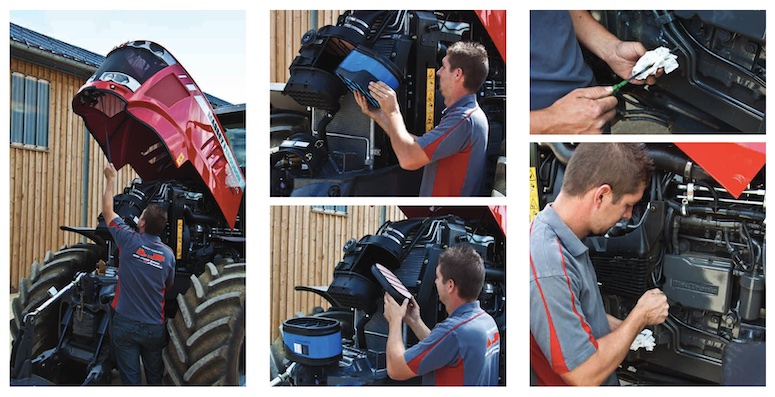
Here’s a service table for troubleshooting a Massey Ferguson tractor that won’t start:
| Service Task | Description |
|---|---|
| Battery Check | Inspect battery terminals for corrosion or loose connections. Test battery voltage and charge if needed. |
| Fuel System Inspection | Ensure sufficient fuel in the tank. Check the fuel filter, fuel lines, and fuel shut-off valve. |
| Ignition System Examination | Inspect spark plugs, ignition switch, ignition coil, and wiring for faults or damage. |
| Cooling System Inspection | Check coolant level, radiator for debris, and ensure proper operation of the cooling fan. |
| Starter Motor and Solenoid | Test the starter motor and solenoid for faults or wiring issues. |
| Safety Switch Verification | Verify proper engagement of safety switches, such as seat switch and neutral start switch. |
| Engine Oil Level Check | Inspect engine oil level and top up if necessary. |
Remember to consult the tractor’s manual for specific instructions and refer to a qualified technician if the troubleshooting steps do not resolve the issue.
Check the Battery if Your Tractor Won’t Start
Here is a step-by-step instruction on how to check the battery if your Massey Ferguson tractor won’t start:
- Ensure that the tractor is turned off and the ignition key is removed.
- Locate the battery: The battery is typically located under the hood or near the engine compartment. Consult your tractor’s manual for the exact location if you’re unsure.
- Inspect the battery terminals: Check the battery terminals for any signs of corrosion, rust, or loose connections. If you notice corrosion, use a wire brush to gently clean the terminals.
- Check the battery voltage: Use a multimeter set to DC voltage to measure the battery’s voltage. Connect the positive (red) probe to the positive terminal (+) and the negative (black) probe to the negative terminal (-).
- Read the voltage: A fully charged battery should read around 12.6 to 12.8 volts. If the reading is significantly lower, it may indicate a low or discharged battery.
- Charge the battery: If the battery voltage is low, use an appropriate battery charger to recharge it. Follow the charger’s instructions and ensure proper ventilation during the charging process.
- Recheck the voltage: Once the battery is fully charged, recheck the voltage with the multimeter. It should now be within the recommended range.
- Tighten connections: Ensure that the battery terminals are securely tightened to prevent any loose connections that could affect the starting process.
- Turn on the tractor: With the battery properly checked and charged, turn the ignition key to start the tractor and observe if it starts successfully.
- Seek professional help if needed: If the battery checks out fine, but the tractor still won’t start, it may indicate another issue. In such cases, it’s recommended to consult a qualified technician for further diagnosis and repair.
Always prioritize safety and refer to your Massey Ferguson tractor’s manual for specific instructions related to battery maintenance and troubleshooting.
How to Examine the Fuel Filter if Your Tractor Won’t Start
Here is a step-by-step instruction on how to examine the fuel filter if your Massey Ferguson tractor won’t start:
- Ensure safety: Turn off the tractor, remove the ignition key, and allow the engine to cool down before starting any maintenance work.
- Locate the fuel filter: The fuel filter is typically located between the fuel tank and the engine. It may be mounted along the fuel line or inside a filter housing. Refer to your tractor’s manual for the exact location.
- Identify the type of fuel filter: Determine the type of fuel filter your tractor is equipped with. It could be a spin-on fuel filter or an in-line fuel filter.
- Check for visible debris: Inspect the exterior of the fuel filter for any signs of dirt, debris, or sediment. If you notice excessive buildup, it may indicate that the filter is clogged and restricting fuel flow.
- Determine if the filter is serviceable: Some fuel filters are designed to be replaced entirely, while others can be serviced by changing the filter element or cleaning the filter housing. Refer to your tractor’s manual to understand the specific requirements.
- Replace the filter (if applicable): If your fuel filter is a spin-on type, use a suitable wrench to loosen and remove the old filter. Install a new filter by hand, ensuring it is tightened to the manufacturer’s specifications. If it’s an in-line fuel filter, follow the instructions provided in the manual for replacing the filter element or cleaning the housing.
- Bleed the fuel system (if necessary): In some cases, replacing the fuel filter may introduce air into the fuel system. To remove air bubbles and ensure proper fuel flow, follow the bleeding procedure outlined in your tractor’s manual.
- Check fuel lines: Inspect the fuel lines for any signs of damage, cracks, or leaks. Tighten any loose connections or replace damaged lines as needed.
- Test the tractor: After examining and potentially replacing the fuel filter, try starting the tractor to see if the issue is resolved. If the tractor still won’t start, further investigation or professional assistance may be required to diagnose and address the problem.
Always follow safety precautions and consult your Massey Ferguson tractor’s manual for specific instructions related to fuel filter maintenance and troubleshooting.
Ignition System Test Guide for Massey Ferguson Tractor
Here is a step-by-step instruction on how to inspect the ignition system if your Massey Ferguson tractor won’t start:
- Ensure safety: Turn off the tractor, remove the ignition key, and allow the engine to cool down before starting any maintenance work.
- Locate the ignition components: The ignition system consists of several components, including the spark plugs, ignition coil, ignition switch, and wiring. Identify the general area where these components are located.
- Inspect the spark plugs: Start by checking the spark plugs. Remove one spark plug wire at a time and use a spark plug socket or wrench to remove the spark plug. Examine the spark plug for signs of fouling, such as carbon deposits or oil residue. Clean or replace the spark plugs if necessary.
- Check the ignition coil: Inspect the ignition coil for any visible damage or signs of wear. Look for cracks, corrosion, or loose connections. If you suspect a faulty ignition coil, it may require professional testing or replacement.
- Inspect the ignition switch and wiring: Examine the ignition switch and associated wiring for any visible faults. Look for loose connections, frayed wires, or signs of damage. Ensure all connections are secure and in good condition.
- Test the ignition system (optional): If you have access to a spark tester, you can perform a basic test of the ignition system. Connect the spark tester to one spark plug wire at a time and crank the engine. Observe if there is a strong spark present. If there is no spark or the spark is weak, it may indicate an issue with the ignition system.
- Verify battery voltage: Ensure that the battery voltage is sufficient for proper ignition system operation. Refer to the earlier instructions on how to check the battery voltage.
- Seek professional help if needed: If the above steps do not identify the problem or if you are unsure about the condition of the ignition system components, it is recommended to consult a qualified technician or Massey Ferguson service center for further diagnosis and assistance.
Always prioritize safety and consult your Massey Ferguson tractor’s manual for specific instructions related to ignition system maintenance and troubleshooting.
How to Inspect the Coolant Levels and Cooling System
Here is a step-by-step instruction on how to inspect the coolant levels and cooling system if your Massey Ferguson tractor won’t start:
- Ensure safety: Turn off the tractor, remove the ignition key, and allow the engine to cool down before starting any maintenance work.
- Locate the coolant reservoir: The coolant reservoir is usually a translucent plastic tank located near the engine. Refer to your tractor’s manual for the exact location.
- Check coolant level: Visually inspect the coolant level in the reservoir. The coolant should be between the minimum and maximum marks indicated on the reservoir. If the coolant level is below the minimum mark, it may indicate a coolant leak or insufficient coolant.
- Inspect coolant quality: Observe the color and condition of the coolant. The coolant should appear clean and have its original color. If the coolant is dirty, contaminated, or discolored, it may indicate the need for a coolant flush and replacement.
- Check for coolant leaks: Inspect the coolant hoses, radiator, water pump, and other components of the cooling system for any signs of leaks, such as wet spots, stains, or drips. Address any leaks by repairing or replacing the affected parts.
- Verify radiator cleanliness: Inspect the radiator fins and cooling fan for debris, dirt, or obstructions. Use a soft brush or compressed air to carefully clean any debris that may be blocking the airflow through the radiator.
- Check the radiator cap: Examine the radiator cap for any signs of damage, such as cracks or worn-out gaskets. A faulty radiator cap can lead to coolant loss or insufficient pressure in the cooling system.
- Top up the coolant (if necessary): If the coolant level is below the minimum mark, use a suitable coolant mixture recommended by the manufacturer to top up the coolant. Follow the instructions in your tractor’s manual for the correct coolant type and mixing ratios.
- Start the tractor: Once you have inspected and addressed any coolant-related issues, start the tractor and observe if the engine starts properly. Pay attention to the temperature gauge and ensure it remains within the normal operating range.
- Seek professional help if needed: If the tractor still won’t start or if you suspect a more complex cooling system problem, it’s recommended to consult a qualified technician or Massey Ferguson service center for further diagnosis and assistance.
Always prioritize safety and consult your Massey Ferguson tractor’s manual for specific instructions related to coolant levels and cooling system maintenance and troubleshooting.
How to Test the Starter Motor and Solenoid
Here is a step-by-step instruction on how to test the starter motor and solenoid if your Massey Ferguson tractor won’t start:
- Ensure safety: Turn off the tractor, remove the ignition key, and allow the engine to cool down before starting any maintenance work.
- Locate the starter motor and solenoid: The starter motor is typically attached to the engine block, while the solenoid is often mounted nearby. Refer to your tractor’s manual for the exact location of these components.
- Inspect the wiring: Check the wiring connections to the starter motor and solenoid. Ensure that all wires are securely connected and free from corrosion or damage. Tighten any loose connections and clean any corrosion if necessary.
- Test the battery: Verify that the battery has sufficient charge by following the earlier instructions on how to check the battery voltage. A weak or dead battery can affect the performance of the starter motor.
- Check the solenoid operation: The solenoid acts as a switch that controls the flow of current to the starter motor. When you turn the ignition key, it sends a signal to the solenoid to engage the starter motor. Use a multimeter set to the appropriate voltage range to test the solenoid’s operation. Connect the multimeter leads to the solenoid terminals and have someone turn the ignition key. The multimeter should display a voltage reading when the key is turned to the start position. If there is no voltage or a low voltage reading, it may indicate a faulty solenoid.
- Test the starter motor: If the solenoid is functioning correctly, the next step is to test the starter motor. Use jumper cables to connect the positive terminal of the battery directly to the positive terminal on the starter motor. Connect the negative terminal of the battery to the engine block for a good ground connection. Caution: Ensure that the tractor is in neutral and the ignition is off before attempting this test. Once the connections are made, briefly touch the other end of the positive jumper cable to the positive terminal on the starter motor. The starter motor should engage and attempt to crank the engine. If the starter motor does not engage or operates weakly, it may be faulty and require replacement.
- Seek professional help if needed: If the above tests do not identify the problem or if you are unsure about the condition of the starter motor and solenoid, it is recommended to consult a qualified technician or Massey Ferguson service center for further diagnosis and assistance.
Always prioritize safety and consult your Massey Ferguson tractor’s manual for specific instructions related to starter motor and solenoid testing, maintenance, and troubleshooting.
Test the Safety Switches
Here is a step-by-step instruction on how to verify all safety switches if your Massey Ferguson tractor won’t start:
- Ensure safety: Turn off the tractor, remove the ignition key, and make sure the engine is cool before starting any maintenance work.
- Identify safety switches: Familiarize yourself with the various safety switches on your Massey Ferguson tractor. Common safety switches include the seat switch, brake switch, clutch switch (if applicable), and PTO (power take-off) switch.
- Inspect the seat switch: The seat switch is designed to prevent the tractor from starting unless someone is sitting in the driver’s seat. Check the seat switch for any visible damage or loose connections. Ensure it is properly engaged when the seat is occupied.
- Check the brake switch: The brake switch ensures that the tractor cannot be started unless the brake pedal is fully depressed. Inspect the brake switch for any signs of damage or loose wiring. Test the switch by pressing and releasing the brake pedal while trying to start the tractor.
- Verify the clutch switch (if applicable): If your tractor has a clutch switch, it ensures that the tractor can only be started when the clutch pedal is fully depressed. Inspect the clutch switch for any visible faults and test its operation by pressing and releasing the clutch pedal while attempting to start the tractor.
- Examine the PTO switch: The PTO switch prevents the tractor from starting if the power take-off is engaged. Inspect the PTO switch for any signs of damage or loose connections. Ensure the switch is in the disengaged position when trying to start the tractor.
- Test the safety switches: With the ignition key turned to the “ON” position, sit on the seat, depress the brake pedal (and clutch pedal if applicable), and disengage the PTO switch. Try starting the tractor while maintaining the correct position of the safety switches. If the tractor starts, it indicates that the safety switches are functioning correctly.
- Seek professional help if needed: If the tractor still won’t start or if you suspect a faulty safety switch, it is recommended to consult a qualified technician or Massey Ferguson service center for further diagnosis and assistance.
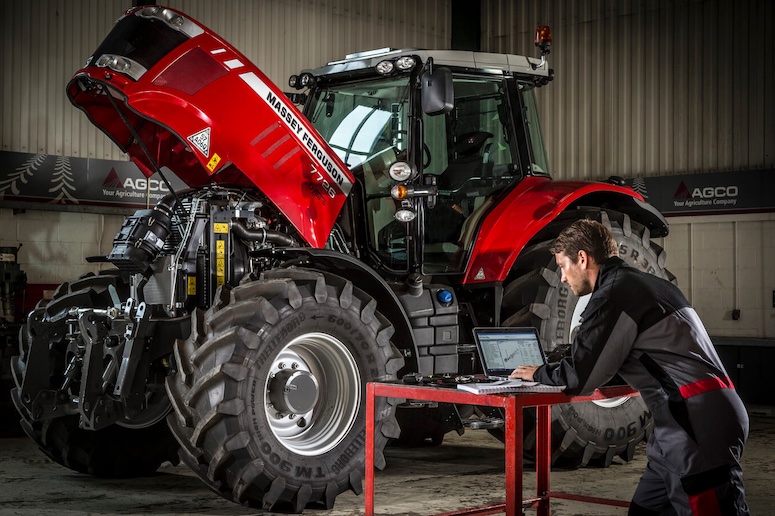
Always prioritize safety and consult your Massey Ferguson tractor’s manual for specific instructions related to safety switch verification, maintenance, and troubleshooting.
How to Check the Engine Oil Level
Here is a step-by-step instruction on how to check the engine oil level if your Massey Ferguson tractor won’t start:
- Ensure safety: Turn off the tractor, remove the ignition key, and let the engine cool down before performing any maintenance work.
- Locate the oil dipstick: Refer to your Massey Ferguson tractor’s manual to find the location of the oil dipstick. Typically, it is located on the side of the engine block or near the oil fill cap.
- Remove the dipstick: Pull out the dipstick from its tube. Wipe off any oil on the dipstick with a clean rag or cloth.
- Reinsert the dipstick: Fully insert the dipstick back into the tube until it is seated properly.
- Remove the dipstick again: Pull out the dipstick from the tube and observe the oil level. The dipstick usually has markings or indicators to indicate the proper oil level range. The oil level should fall between the minimum and maximum marks or within a designated range.
- Check the oil condition: Take note of the oil’s color and consistency. Fresh engine oil should typically be transparent amber or brown in color. If the oil appears dark, dirty, or has a milky appearance, it may indicate a problem such as contamination or water infiltration.
- Add or replace oil if necessary: If the oil level is below the minimum mark or if the oil appears dirty or contaminated, it is advisable to add or replace the engine oil. Consult your Massey Ferguson tractor’s manual for the recommended type and viscosity of engine oil. Use a funnel to pour the oil into the oil fill port or designated opening. Recheck the oil level using the dipstick and add more oil as needed.
- Reinsert the dipstick and secure it properly: Once the oil level is correct, fully reinsert the dipstick back into the tube and ensure it is securely in place.
- Seek professional help if needed: If the engine oil level is within the proper range, and the tractor still won’t start, there may be other issues at play. It is recommended to consult a qualified technician or Massey Ferguson service center for further diagnosis and assistance.
Always prioritize safety and consult your Massey Ferguson tractor’s manual for specific instructions related to checking the engine oil level, maintenance, and troubleshooting.
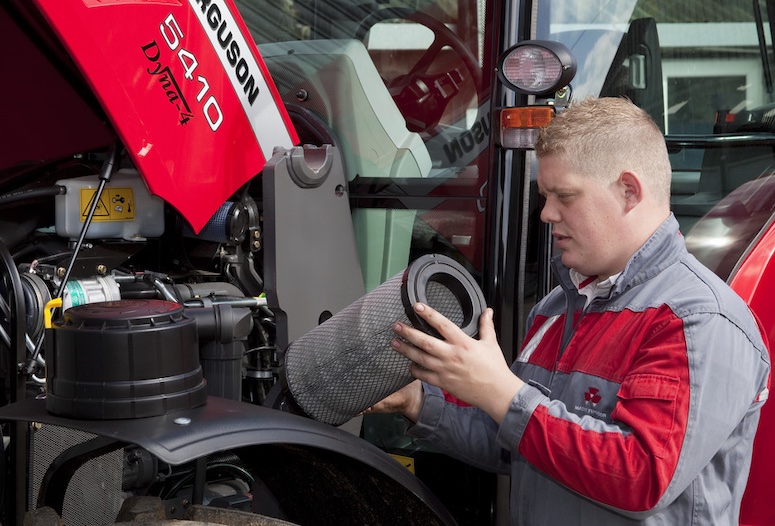
FAQ – Massey Ferguson Tractor Won’t Start
Q1: Why won’t my Massey Ferguson tractor start?
A: There can be several reasons why your Massey Ferguson tractor won’t start, including issues with the battery, fuel system, ignition system, safety switches, or engine components.
Q2: How can I determine if the battery is causing the starting problem?
A: Check the battery connections for corrosion or looseness. Use a multimeter to measure the battery voltage. If the voltage is low, recharge or replace the battery.
Q3: What should I do if there’s a problem with the fuel system?
A: Inspect the fuel filter for clogs and ensure there is sufficient fuel in the tank. Check the fuel lines and pump for any leaks or blockages. Clean or replace the fuel filter if necessary.
Q4: How can I troubleshoot the ignition system?
A: Verify that the spark plug is clean and in good condition. Check the ignition switch and wiring for any faults. Test the ignition coil and other ignition components for proper functioning.
Q5: What role do safety switches play in starting the tractor?
A: Safety switches such as the seat switch, brake switch, clutch switch (if applicable), and PTO switch ensure safe operation. Check these switches for proper engagement and functionality.
Q6: How can I diagnose engine component issues?
A: Inspect the air filter, coolant levels, and engine oil level. Ensure the cooling system is working properly. Test the starter motor and solenoid for proper operation.
Q7: When should I seek professional help?
A: If you have checked the common causes and performed basic troubleshooting steps but still cannot start the tractor, it is advisable to consult a qualified technician or Massey Ferguson service center for further diagnosis and assistance.
Please note that these are general guidelines, and it is essential to consult your Massey Ferguson tractor’s manual for specific instructions and recommended maintenance procedures.
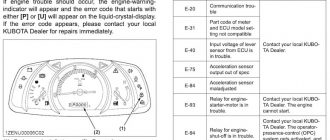





How to Diagnose Transmission Problems on Massey Ferguson Tractors?
Diagnosing transmission problems on Massey Ferguson tractors requires a systematic approach to identify and troubleshoot the issues. Here is a step-by-step guide to help you diagnose transmission problems:
1. Identify the symptoms: Pay attention to any abnormal behavior or signs that indicate a transmission problem. These may include difficulty in shifting gears, slipping clutch, grinding noises, loss of power, or erratic operation.
2. Check the fluid level: Inspect the transmission fluid level and condition. Low fluid level or contaminated fluid can lead to transmission issues. Ensure the tractor is parked on a level surface and follow the manufacturer’s guidelines to check the fluid level.
3. Inspect for leaks: Look for any signs of fluid leaks around the transmission area. Leaks can indicate damaged seals or gaskets that need to be replaced.
4. Test the clutch operation: If the tractor has a manual transmission, check the clutch operation. Ensure the clutch engages and disengages smoothly without slipping or dragging.
5. Assess gear shifting: Test the gear shifting by engaging each gear one at a time. Pay attention to any resistance, grinding noises, or difficulty in shifting gears. This can indicate problems with the clutch, linkage, or internal transmission components.
6. Check the transmission filter: Some Massey Ferguson tractors have a transmission filter. Inspect the filter for clogs or signs of excessive debris. A dirty or clogged filter can restrict fluid flow and affect transmission performance.
7. Inspect linkage and cables: Examine the linkage and cables connecting the gear shifter to the transmission. Ensure they are properly adjusted, free of obstructions, and move smoothly without binding.
8. Consult the owner’s manual: Refer to the tractor’s owner’s manual for specific troubleshooting steps, recommended fluid type, and maintenance intervals. The manual may also provide information on common transmission problems and their solutions.
If you are unable to diagnose or resolve the transmission problem on your own, it is advisable to consult a qualified technician or contact your local Massey Ferguson dealer. They have the expertise and specialized tools to diagnose and repair complex transmission issues. Always follow proper safety precautions and consult professional help if you are unsure or uncomfortable with any diagnostic or repair tasks.